Reservations about Reservations
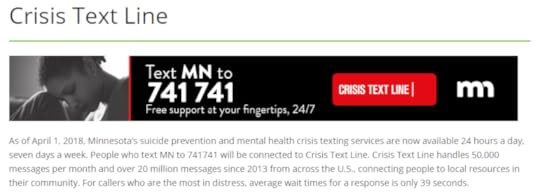 This blog is a criticism of reservations and not of Native Americans. As the owner of CORE Professional Services, which is a fairly large central Minnesota employer, 7% of our employees are Native American and they are all outstanding professionals. (In a state where 1.1% of the population is Native American.)
This blog is a criticism of reservations and not of Native Americans. As the owner of CORE Professional Services, which is a fairly large central Minnesota employer, 7% of our employees are Native American and they are all outstanding professionals. (In a state where 1.1% of the population is Native American.)Native American reservations are the greatest failure of American efforts with a culture I can think of. The poorest place in the United States with a population over 1000 is Blackwater Reservation in Arizona. The poorest place of any size in the United States is Pine Ridge Reservation in South Dakota. People hoped that casinos would greatly improve life on reservations. The reality is legal gambling has brought more problems than solutions, including corruption, gangs and drug trafficking. Plus, prosecution on reservations is complicated by the fact that you need to determine the race of the participants to resolve the issue. An assault could fall under 4 different investigative jurisdictions:
If a Native assaults another Native on a reservation, it is investigated by the tribal police and goes to tribal court. If a non-Native assaults a non-Native on a reservation (for example a fight at a casino), it is investigated by the state and goes through the county and state court system.If a non-Native assaults a Native on a reservation, the FBI has jurisdiction and the case goes to federal court. Oddly enough, 2 reservations (Mille Lacs and White Earth) have developed what is called “assumption” jurisdiction, allowing both the state and federal agents to investigate.
The average life expectancy of Native Americans who live on reservations is 48 for men and 52 for women. The average life expectancy for Native Americans who do not live on reservations is the same as everyone else in the United States—78. Living on a reservation basically takes 30 years off your life. When people talk about growing up in rural Minnesota, or parts of the Twin Cities, you hear people say, “You’re lucky you grew up there.” I’ve never heard anyone say that about reservations.
A mistake some reservations make is focusing primarily on hiring teachers of Native American ancestry. Data from The Department of Education indicates that Native Americans are the group least likely to graduate from college. If you limit your choices to the smallest number of applicants, you’re less likely to get the best teachers. If you don’t have the best teachers, you will always be the group least likely to graduate from college. The culture could be preserved by having Native spiritual leaders teach in every school, while still pursuing the best teachers (regardless of race). When you look at the data, Asian American families are obviously doing something right, in a society where there is a direct correlation between income and years of education. Asian Americans are also the highest income group in the United States. I tell people you get what you emphasize. For the most part, you don’t find Asian Americans in Hockey or the NFL or the NBA, you do find them successful in every academic field.
% of Americans ages 25-29 who have college degrees by group
Asian American 68.9%
European American 54.0%
Females 50.1%
Males 41.3%
Mixed race 38.4%
African American 31.1%
Mexican American 25.7%
Pacific Islander 24.9%
Native American 22.3%
May 5 marked the National Day of Awareness for Missing and Murdered Indigenous Women and Girls. Here are some statistics from the Indian Law Resource Center: In the United States, violence against indigenous women has reached unprecedented levels on tribal lands. More than 4 in 5 American Indian women have experienced violence, and more than 1 in 2 have experienced sexual violence. Alaska Native women continue to suffer the highest rate of forcible sexual assault and have reported rates of domestic violence up to 10 times higher than in the rest of the United States. The suicide for American Indian girls is 3 times the national average. On some reservations, indigenous women are murdered at more than 10 times the national average. Although the Violence Against Women Reauthorization Act of 2013 and the Tribal Law and Order Act have helped bring attention to the high rates of violence against Native women, there is still no reliable way of knowing how many Native women go missing each year. In 2016, North Dakota alone had 125 cases of missing Native women reported to the National Crime Information Center (NCIC), compared to 5,712 total Native women cases reported in the United States. However, the actual number is likely much higher, as cases of missing Native women are often under-reported and the data has never been officially collected.
Only 22% of Native Americans live on reservations nationally. The impact for those who do is concerning. A 2009-2012 study by Colorado State University found 56.2 percent of American Indian 8th graders and 61.4 percent of those in 10th grade had used marijuana, compared to 16.4 percent of 8th graders and 33.4 percent of 10th graders of non-Natives. American Indian students’ annual heroin and Oxycontin use was about 2 to 3 times higher than the national average. Several early childhood interventions, such as the Nurse-Family Partnership, have been shown to effectively (and cost-effectively) reduce adolescent drug use and related problems in disadvantaged communities by targeting risk and protective factors as early as the prenatal period and infancy. Early intervention is crucial in preventing another generation from being lost to substance abuse and addiction. But keep in mind that even though the rates of substance abuse for Native Americans is higher than other groups, at 12%, most Native Americans do not abuse substances.
The information below, up to the picture of the grave marker, was taken from an article in the Washington Post on Pine Ridge Reservation in South Dakota.
Clarence Broken Rope walks in front of the house where he grew up in Allen, SD. He now lives with an aunt not far away. “This guy, he killed himself in a car accident,” Clarence said, pointing to the grave of a 25-year-old next to the grave of a 21-year-old who also died in that accident. “He was drunk.” This is Desmond Poor Bear, the one who got shot by police,” he said of a mound of fresh dirt with a marker: 4-17-82 to 7-29-09. “He was drunk, and he had a knife. Not too many people die of old age here,” he said. “I have a cousin who is in the process of crossing over. He was just telling us, ‘I’m going to go out. I’m going to kill myself.’” And he did, in the slowest way possible, Clarence said. “He stayed drunk for months on end, week after week,” he said. “He never did eat. He didn’t care to shower. Now he’s got full blown cirrhosis. His body is all orange. We’re preparing ourselves now for his journey.”
“How old is he?” I asked.
“He’s 30” he said. "I never thought I’d actually live to be 23,” he added. "And now that you have? Do you think you’ll live to be 50, 60, maybe 80? " "I wouldn’t say 50. My guess 40,” he said.
Just that morning, Michael and I had been in a very different place. We were in Belle Fourche, SD, watching a mom and dad unload their children from a minivan and race toward an American flag in the middle of a field. It marks the exact center of the nation and tourists flock to the spot, from near and far, just to say they did it.
 Michael and Nicole Mach lift 1-year-old Bejamin over a barbwire fence that separates the road from a spot marking the center of the nation. Photo by Michael Williamson/The Washington Post. Their three children, ages 1, 3 and 9, ran through the yellowed grass around the flag, laughing. “It’s hard to count the stars when they’re moving,” the oldest, Allison, told her father, out of breath.
Michael and Nicole Mach lift 1-year-old Bejamin over a barbwire fence that separates the road from a spot marking the center of the nation. Photo by Michael Williamson/The Washington Post. Their three children, ages 1, 3 and 9, ran through the yellowed grass around the flag, laughing. “It’s hard to count the stars when they’re moving,” the oldest, Allison, told her father, out of breath.  The Mach family stand at the center of the nation in Belle Fourche, SD. Photo by Michael Williamson/The Washington Post. That was only four hours away from Allen, just enough time for morning to turn into the afternoon, but it so felt so distant by the time Michael and I arrived on the reservation. The streets were empty and houses were quiet. Many buildings were tattooed with the word, “A-town,” the mark of a local gang. Nancy Broken Rope said, “Everyday I worry. Everyday,” she said. “The only thing that helps is a little prayer.”
The Mach family stand at the center of the nation in Belle Fourche, SD. Photo by Michael Williamson/The Washington Post. That was only four hours away from Allen, just enough time for morning to turn into the afternoon, but it so felt so distant by the time Michael and I arrived on the reservation. The streets were empty and houses were quiet. Many buildings were tattooed with the word, “A-town,” the mark of a local gang. Nancy Broken Rope said, “Everyday I worry. Everyday,” she said. “The only thing that helps is a little prayer.” 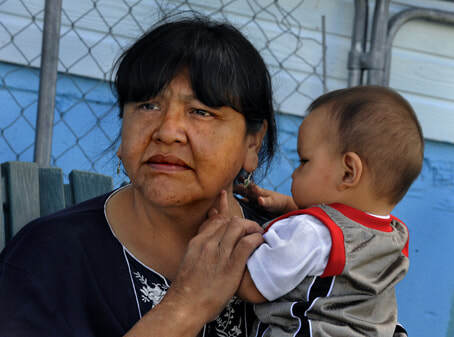 Nancy Broken Rope rocks her grandson LeAndre Williams. Photo by Michael Williamson/The Washington Post. To find work in the past, she’s had to leave the area because there are no jobs locally, she said. Both said they had come back to Allen because it’s their home, it is the life they know best. Nancy couldn't afford a house anywhere else and didn't want to lose the one she already had. Clarence said he came back in part because he is his mother’s “only bull,” meaning only son, and that it's his responsibility to take care of her. But, he said, he knows the risk of staying.
Nancy Broken Rope rocks her grandson LeAndre Williams. Photo by Michael Williamson/The Washington Post. To find work in the past, she’s had to leave the area because there are no jobs locally, she said. Both said they had come back to Allen because it’s their home, it is the life they know best. Nancy couldn't afford a house anywhere else and didn't want to lose the one she already had. Clarence said he came back in part because he is his mother’s “only bull,” meaning only son, and that it's his responsibility to take care of her. But, he said, he knows the risk of staying. 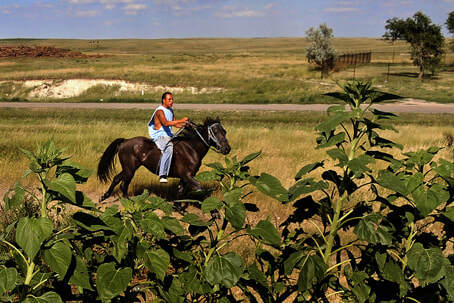 After his first suicide attempt, Clarence said he sobered up and sold the gun for $250. But a year later, he tried again. After a girlfriend broke up with him, he said he swallowed half a container of pills and had to be taken to the hospital by a friend. “This type of life, you got to be strong to live it,” he said. "It’s different from the city because out here there ain’t no mobility, no income really…Around here, it’s basically not having a job that’s driving us crazy.”
After his first suicide attempt, Clarence said he sobered up and sold the gun for $250. But a year later, he tried again. After a girlfriend broke up with him, he said he swallowed half a container of pills and had to be taken to the hospital by a friend. “This type of life, you got to be strong to live it,” he said. "It’s different from the city because out here there ain’t no mobility, no income really…Around here, it’s basically not having a job that’s driving us crazy.” 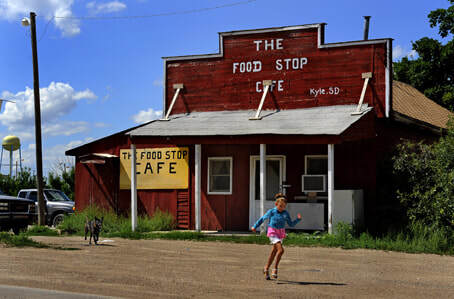 A contributing cause of poverty on the reservations are the lack of commercial businesses, which limits the number of local available jobs. Photo by Michael Williamson/The Washington Post. We found a group of boys, ranging in age from 11 to 15, swimming in a watering hole. They jumped and laughed and threw rocks at teenage girls who tried to approach. It was a picture of innocence, until we talked to them. Most had started drinking when they were 9 years old and had started smoking marijuana not long after that. Several told of having problems in school or not caring about it at all. One boy asked if we had food stamps to give him.
A contributing cause of poverty on the reservations are the lack of commercial businesses, which limits the number of local available jobs. Photo by Michael Williamson/The Washington Post. We found a group of boys, ranging in age from 11 to 15, swimming in a watering hole. They jumped and laughed and threw rocks at teenage girls who tried to approach. It was a picture of innocence, until we talked to them. Most had started drinking when they were 9 years old and had started smoking marijuana not long after that. Several told of having problems in school or not caring about it at all. One boy asked if we had food stamps to give him. 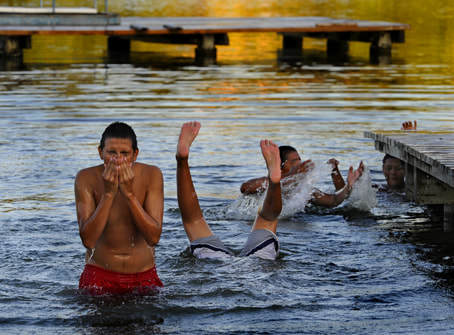 A group of boys swim at the Rosebud Dam. Photo by Michael Williamson/The Washington Post. “You know what these are?” a 14-year-old asked me, holding up a pair of brass knuckles. He wasn’t saying it in a threatening manner, just showing that he could protect himself and the other boys if he needed to. One of our friends just passed away a few days ago,” one of the boys said. “He stole an SUV and lost control.” He was 11 years old. “That’s why it sucks over here,” the boy said. They pointed us in the direction of a dirt road that they would pass on their way home and where a small white cross was surrounded by white roses, a toy truck, two apples and four cigarettes.
A group of boys swim at the Rosebud Dam. Photo by Michael Williamson/The Washington Post. “You know what these are?” a 14-year-old asked me, holding up a pair of brass knuckles. He wasn’t saying it in a threatening manner, just showing that he could protect himself and the other boys if he needed to. One of our friends just passed away a few days ago,” one of the boys said. “He stole an SUV and lost control.” He was 11 years old. “That’s why it sucks over here,” the boy said. They pointed us in the direction of a dirt road that they would pass on their way home and where a small white cross was surrounded by white roses, a toy truck, two apples and four cigarettes. 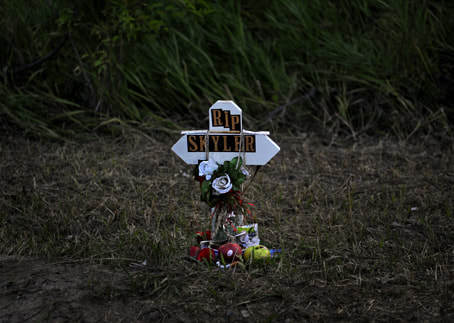 A memorial for an 11-year-old who died on the dirt road that his friends pass on their way home from the Rosebud Dam. Photo by Michael Williamson/The Washington Post How did we get here?
A memorial for an 11-year-old who died on the dirt road that his friends pass on their way home from the Rosebud Dam. Photo by Michael Williamson/The Washington Post How did we get here? It started with crazy thinkers like Andrew Jackson who were convinced that we couldn’t peacefully coexist. Jackson made it a mission to chase Natives out of the 13 colonies and his forces had the power to do it, because they had better weapons. Jackson was a hypocrite. He grew up in harsh conditions as the youngest in a family that had been taken prisoner by the British in the revolutionary war. His parents and older siblings died either during their incarceration or as a result of their illnesses and injuries they incurred during their incarceration. Later, when Jackson led his force to wipe out Indians who had attacked a village, the only survivor was an Indian baby. When asked by a soldier if the baby should be killed, since the baby’s parents were both dead, Jackson responded, “No. That baby is just like me. I will raise him.” The child lived with Jackson as his son, even in the White House when Jackson became president, but unfortunately died of an illness at age 9. Abraham Lincoln was a great president who listened to others. During a conversation with former slave Frederick Douglas, Lincoln proposed creating a free black state. Douglas told him it would be a disaster, as blacks would be given the worst places to live and there would be no business. Lincoln agreed that Douglas was right. We needed to coexist. And then later, we made the very mistake Lincoln avoided, with Native Americans.
Suggestions:
We need to start developing a no tolerance of abuse attitude toward Native Americans similar to the “Me Too” movement. We have movies, like Wind River, that bring attention to assaults on Native Americans by white men. I have my own experience of completing assessments on Native American women and girls who have been assaulted on reservations by Native American men. In one case, a 15-year-old girl was sexually assaulted by 3 men and her body was cut down her side with a broken beer bottle. The assault was reported to the Tribal Police, along with the names of the offenders, and no one was prosecuted. I would like to see people of all races work together to resolve this problem. I don’t feel the answer is leaving it completely with the Tribal Police, or having it investigated by an all-white force.
Since reservations (with casinos) offer cash payments, how about making academic success an incentive, with standardized testing to mark learning? How about investing casino money into tutors at every grade level to help students' progress? How about investing money into education on conservation and Native culture? Mille Lacs Lake could be an area people come to learn about Native culture, and fish, from all over the world. Instead it’s referred to as the “Dead Sea” because it’s been over-netted for years. In my readings of Native life, I haven’t read anywhere that wiping out a natural resource was part of the culture. There are solutions. Step 1. We need to stop ignoring the problem. Step 2. Begin giving more attention to Native achievements. Step 3. We need to work together!
Reservations also need exactly what’s needed in inner cities. Legitimate opportunities for the average person. Forbes magazine suggested the solution is allowing American Indians private ownership of the land and of their homes. The vast majority of land on reservations is held communally. That means residents can’t get clear title to the land where their home sits, which is a reason for the abundance of mobile homes on reservations. This makes it hard for Native Americans to establish credit and borrow money to improve their homes because they can’t use the land as collateral--and investing in something you don’t own doesn’t make sense.
This leads to what economists call the tragedy of the commons: If everyone owns the land, no one does. So the result is substandard housing and a communal rundown look that comes from a lack of investment, overuse and environmental degradation. It’s a look that’s common worldwide, wherever secure property rights are lacking—much of Africa and South America, inner city housing projects, rent-controlled apartment buildings in the U.S., and Indian reservations.
Quotes:
Cigarettes are the only product if used correctly, kill the customer. George Carlin
I completely understand the complaints of 2nd hand smoke. (Fact: 25% of nicotine goes in the smoker and 75% goes in the air around the smoker.) It’s sort of like having someone sit at a table and throw anthrax in the air. George Carlin
Our capacity for friendship is God’s way of apologizing for our families. Jay McInerney
To lose one parent may be regarded as misfortune, but to lose two parents, is simply carelessness. Oscar Wilde
Thanks for listening,
Frank Over 30 tractors rolled in on Pierz High School's annual drive your tractor to school day.

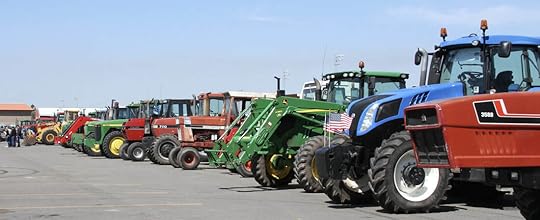
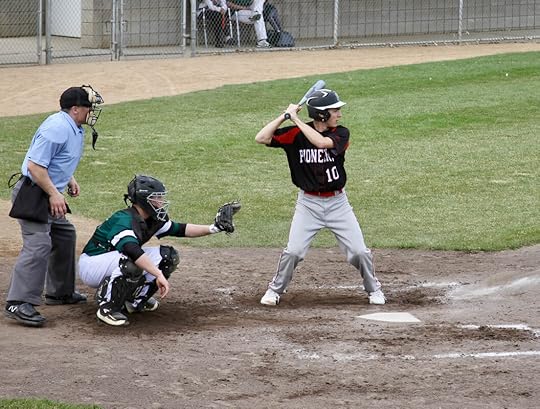

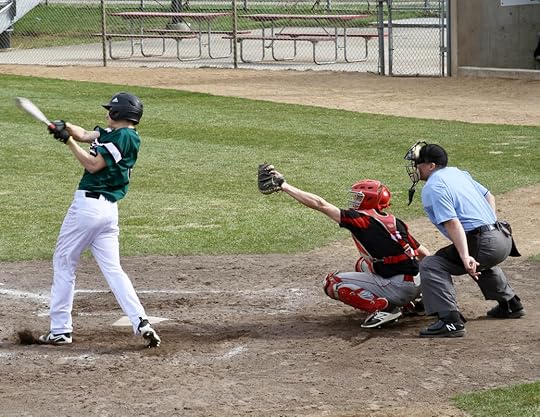


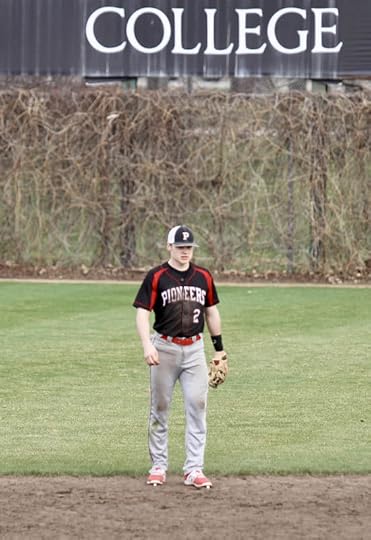
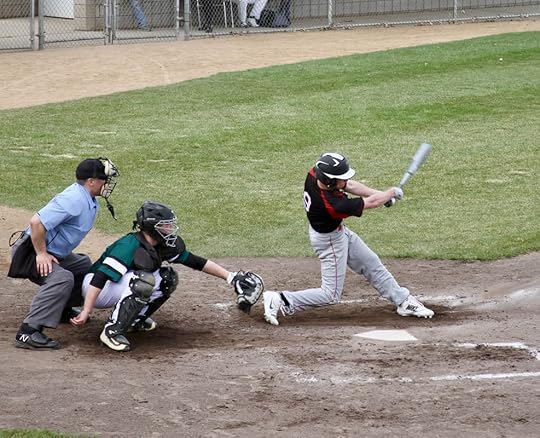
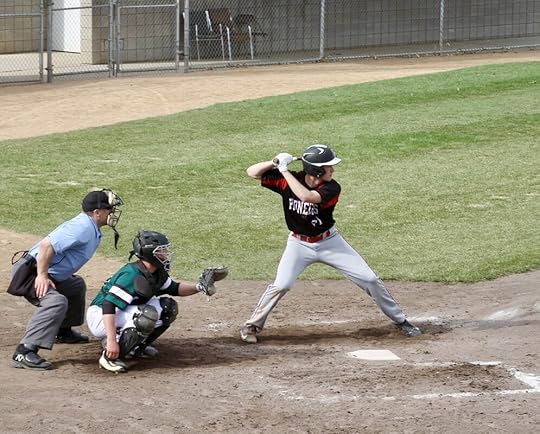

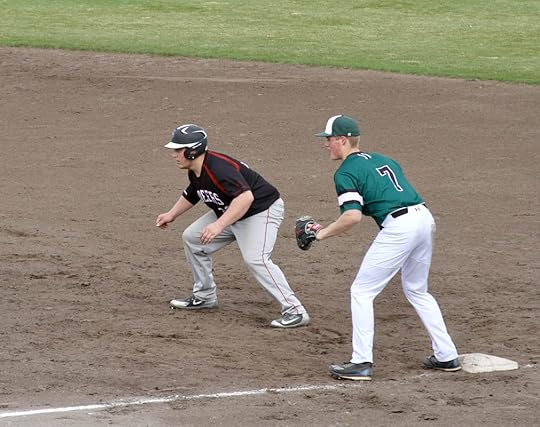
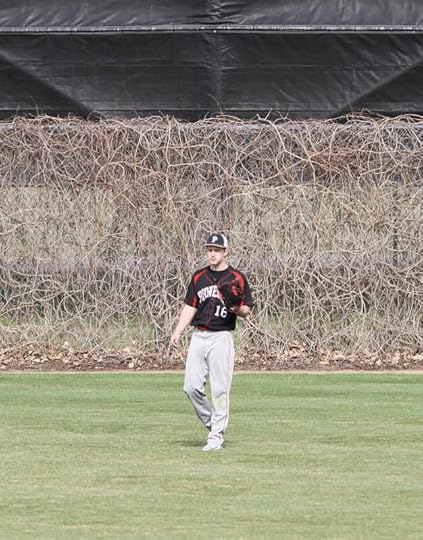
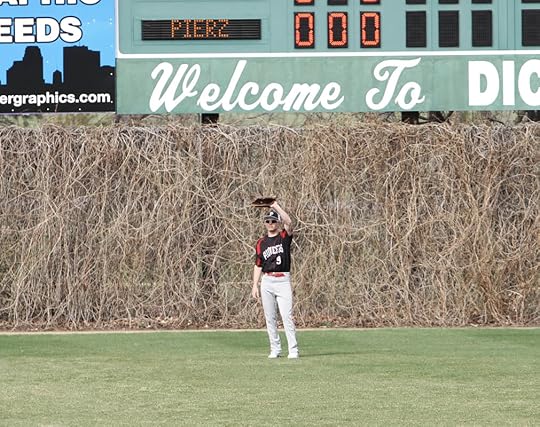
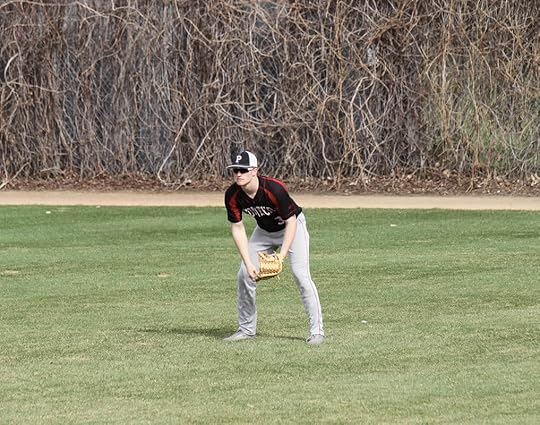
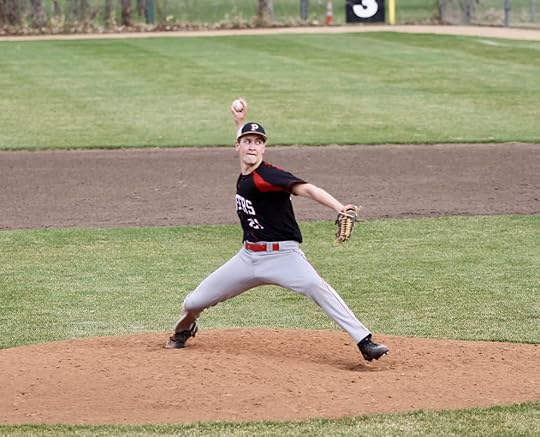
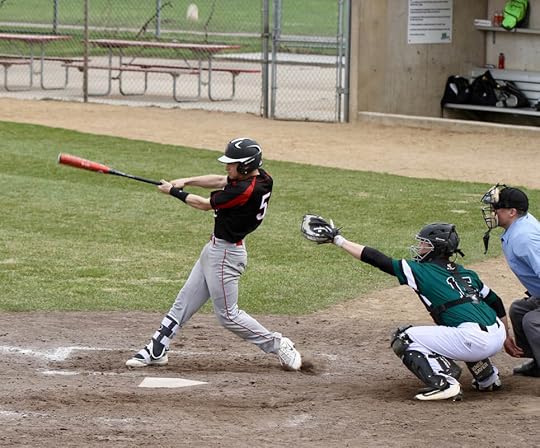
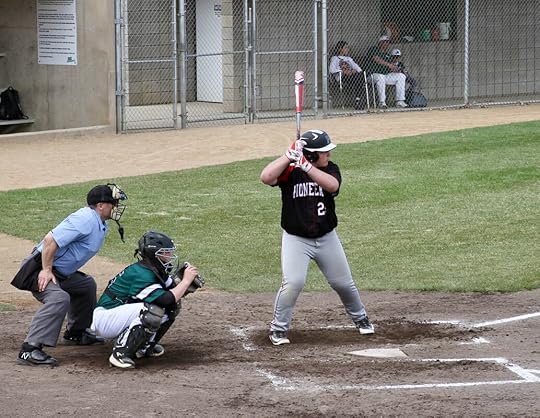

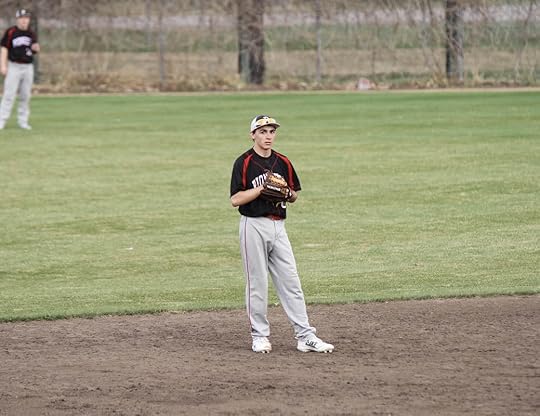
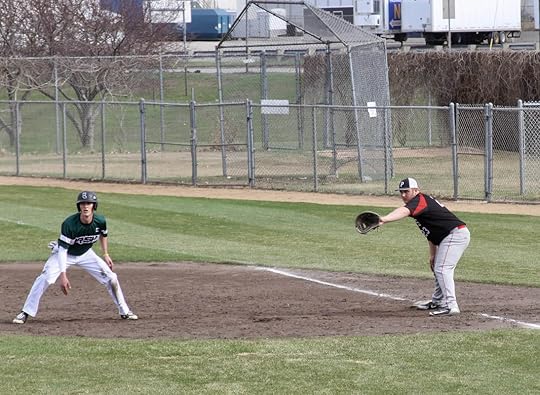
Published on May 07, 2018 08:30
No comments have been added yet.



